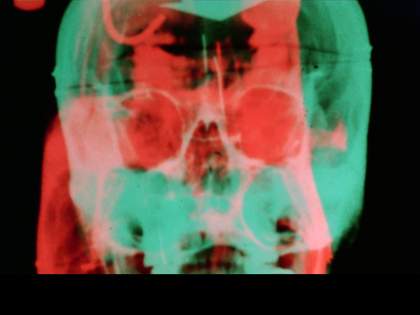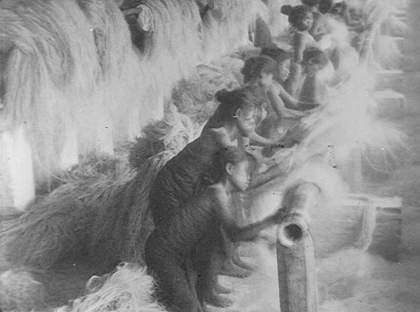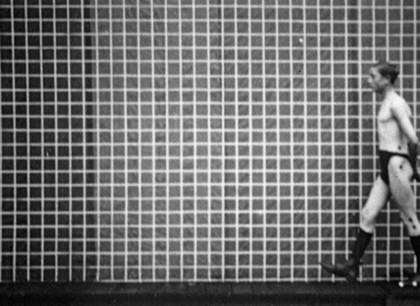Following from Tate Modern’s 2022 Counter Encounters series titled Several Encounters over Plants, Science, Body, Anatomy explores the intersection of film and medical technology. Curated with Sonia Epstein, from the Museum of the Moving Image, New York, this two-day series opens with a selection of shorts presented as part of Tate Modern Lates. Archival medical films from the Wellcome Collection are paired with contemporary works by women artists Barbara Hammer, Leslie Thornton, Caroline Key, and Jeamin Cha. Together, these films underscore the fraught relationship between the personal experience of the body and the medical gaze.
Robert Janker, Germany’s first X-ray specialist, likely honed his expertise on the backs of unwitting citizens. Roentgenfilm IV, which opens Tate Film’s programme, forms part of a series of cineradiography films he made in the 1930s to demonstrate the movements of the body. With the knowledge that Janker used eugenics as a justification for the racial policies of Nazi Germany, this educational film is chilling.
Ellie’s Eye, an essay film by Jeamin Cha, surveys the medical field’s quest to see the invisible, starting with the discovery of X rays and continuing to present attempts to model the mind with artificial intelligence. Through a combination of filmed scenes, found footage, and medical imaging, Cha explores how society reifies disease and what is left out of such accounts.
Where the medical gaze—as seen in X-ray films like Janker’s—can dehumanize its subjects, Barbara Hammer’s Sanctus re-humanizes hers. One of the pioneering queer filmmaker’s most significant works, Sanctus reminds us of the body’s fragile beauty. Onto archival 1950s X rays, Hammer superimposes images and text calling attention to the effects of radiation. Intimately acquainted with the body as both a sensual and diseased subject, the artist also exalts the physical form with stunning colours and Neil B. Rolnick’s operatic score.
Caroline Key enters the body in a new way with Khôra, while also harkening back to the exploitative origins of medical techniques still used today. Allusions to J. Marion Sims and the enslaved Black women he developed gynaecological techniques upon are collaged together with medical footage from Key's time working as an OBGYN surgical videographer and 3D medical animation, contrasting rendering and reality of the body’s interior.
The body’s interior is made specific in Leslie Thornton and Ron Vawter’s Strange Space. The film brings us into the doctor’s office, Vawter’s most private space, as his diagnosis of AIDS is discussed. Images from a sonogram alternate with those of the moon’s surface to suggest the alienation a patient can feel from their own body, especially as they prepare to leave it.
Unidentified Orthopaedic Subject, a medical film from 1935, closes the programme. This work, which is from the Wellcome Collection archive, frames a nearly naked man against a grid to study gait. While referencing the origins of the moving image, this short reminds viewers of the construction of anatomical knowledge and the inextricable relationship between the body and cinema
The second day of the programme will take place on Saturday 25 November 2023.
Supported by In Between Art Film and organised in collaboration with Museum of the Moving Image, New York.



